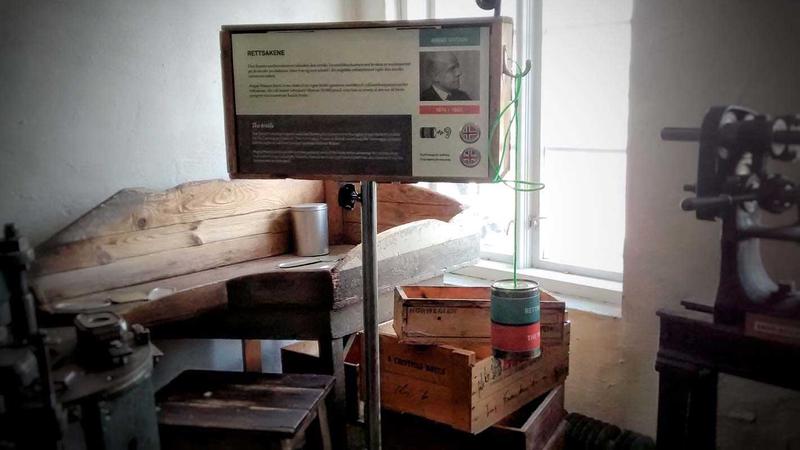Norwegian Canning Museum

The Norwegian Canning Museum has came up with an interesting way to disguise a device I typically hate, and I loved it!
I usually celebrate the enhancement of a users experience with sound but one thing I actually dislike about audio in museums are the typical “Pickup to Listen” devices.
It’s strange as they are a very common device and seem to be the “go to” for using sound in a museums. They keep unwanted noise down and allow a user to choose to interact with the story or simply bypass it.
However the only way the sound can enhance your experience is if you actually pick up the device and place it to your ear. And this is where the negatives come in…
You have to pick up a small speaker and place it to your ear (reducing immersion). These are often too quiet and sound awful. They are attached with a wire that is too short and they look like telephone from the early 70’s. And that’s not mentioning that these devices are probably amazing places for germs to transfer from person to person.
I actually dislike headphones as well for many of the same reasons, even though they often provide good sound quality and total sound immersion.
All that being said, I love the way it is integrated in the Norwegian Canning Museum.
The Norwegian Canning Museum is a small museum based in Norway inside an old sardine fish canning factory, as you could have guessed by its self explanatory name.
Placed around the museum are signs showing each stage of the process from fisherman delivery to labelling the cans. Included in these signs are the dreaded “Pickup to Listen” devices.

There is a difference though.
The devices are instead tin cans on a piece of string. What a perfect thing in a museum about canning sardines.
The novelty gained enough attention from me that I picked it up. I pressed the English button (a handy addition for a person who doesn’t speak Norwegian) and to my surprise heard great voice acting, not boring narration that sounds like someone so plainly reading a script.
The string wire was long enough and because it was a tin can I didn’t need to press the device hard into my ear to be able to hear, as with the small speakers in other similar devices. The sound quality was also decent enough. Much better than an actual string on the end of a tin can.
Another thing I noted was that although the voiceover actor’s were telling the story on the text of the sign, the sign was not a direct transcript of the audio. Therefore it appeared that it was a different way of telling the information and reinforcing what you’ve already read, not repeating it.
Those who are hearing impaired can still follow the story through the text without missing any information that can only be heard and those that do listen do not feel “cheated” that the information is the same as the text.
It just goes to show that maybe I was wrong about these devices, maybe they are generally poorly executed and a great design like in this museum shows that they can be good if done correctly.
Check out the Norwegian Canning Museum - http://norskhermetikkmuseum.no/